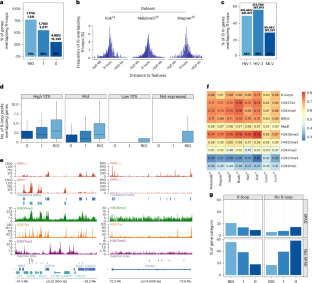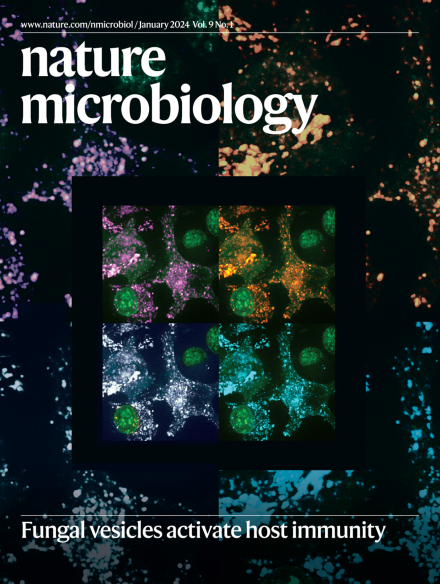Aquarius helicase facilitates HIV-1 integration into R-loop enriched genomic regions
IF 19.4
1区 生物学
Q1 MICROBIOLOGY
引用次数: 0
Abstract
HIV-1 integration into host chromosomes, essential for viral replication, is catalysed by viral integrase (IN). IN recurrently targets intronic regions of transcriptionally active genes, but a detailed understanding of this process is still unclear. Here, using ex vivo activated human primary CD4+T cells, we find that genomic RNA:DNA hybrids (R-loops) preferentially map to intronic regions of active genes that are typical HIV-1 integration sites. IN binds R-loops and their resolution enhances viral integration in vitro. We identify Aquarius (AQR), the splicing RNA helicase of the pentameric intron binding complex (IBC), which associates with IN and show that its RNA:DNA helicase activity promotes integration into hybrid substrates in vitro. Knockout of AQR in primary CD4+ T cells impaired overall integration efficiency, while sequencing of remaining integrations mapped them to intergenic and R-loop distal regions. These findings may have important implications for HIV-1 latency and reactivation and may thus identify novel therapeutic targets. R-loops formed by RNA hybridization to DNA template strand during transcription influence HIV-1 integration into the CD4+ T cell genome. The unwinding of R-loops by splicing helicase Aquarius facilitates integration into speckle-associated domains.


水瓶座解旋酶促进HIV-1整合到R-loop富集的基因组区域
HIV-1整合到宿主染色体中,是病毒复制所必需的,是由病毒整合酶(IN)催化的。IN经常靶向转录活性基因的内含子区域,但对这一过程的详细了解仍不清楚。在这里,使用体外激活的人类原代CD4+T细胞,我们发现基因组RNA:DNA杂交体(r -环)优先映射到活性基因的内含子区域,这些区域是典型的HIV-1整合位点。IN结合r -环和它们的分离增强了病毒在体外的整合。我们鉴定了与IN相关的五聚体内含子结合复合体(IBC)的剪接RNA解旋酶Aquarius (AQR),并表明其RNA:DNA解旋酶活性促进了体外杂交底物的整合。敲除原代CD4+ T细胞中的AQR会损害整体整合效率,而剩余整合的测序将它们定位于基因间和r环远端区域。这些发现可能对HIV-1潜伏期和再激活具有重要意义,并可能因此确定新的治疗靶点。
本文章由计算机程序翻译,如有差异,请以英文原文为准。
求助全文
约1分钟内获得全文
求助全文
来源期刊

Nature Microbiology
Immunology and Microbiology-Microbiology
CiteScore
44.40
自引率
1.10%
发文量
226
期刊介绍:
Nature Microbiology aims to cover a comprehensive range of topics related to microorganisms. This includes:
Evolution: The journal is interested in exploring the evolutionary aspects of microorganisms. This may include research on their genetic diversity, adaptation, and speciation over time.
Physiology and cell biology: Nature Microbiology seeks to understand the functions and characteristics of microorganisms at the cellular and physiological levels. This may involve studying their metabolism, growth patterns, and cellular processes.
Interactions: The journal focuses on the interactions microorganisms have with each other, as well as their interactions with hosts or the environment. This encompasses investigations into microbial communities, symbiotic relationships, and microbial responses to different environments.
Societal significance: Nature Microbiology recognizes the societal impact of microorganisms and welcomes studies that explore their practical applications. This may include research on microbial diseases, biotechnology, or environmental remediation.
In summary, Nature Microbiology is interested in research related to the evolution, physiology and cell biology of microorganisms, their interactions, and their societal relevance.
 求助内容:
求助内容: 应助结果提醒方式:
应助结果提醒方式:


